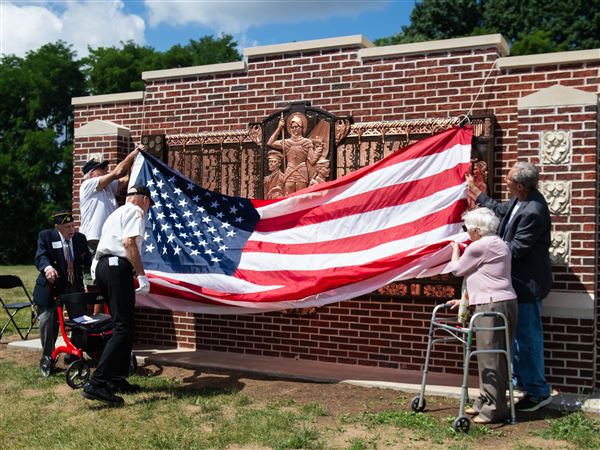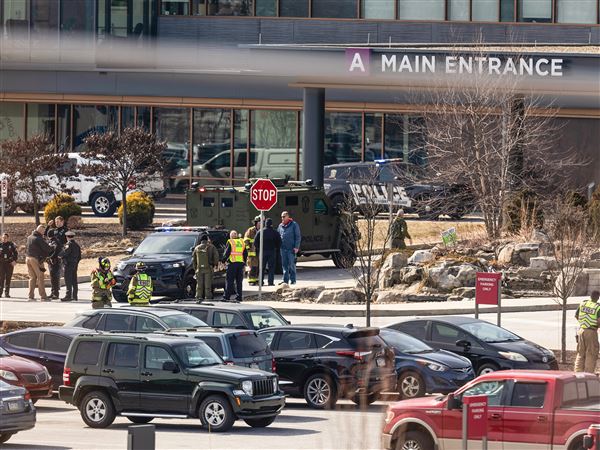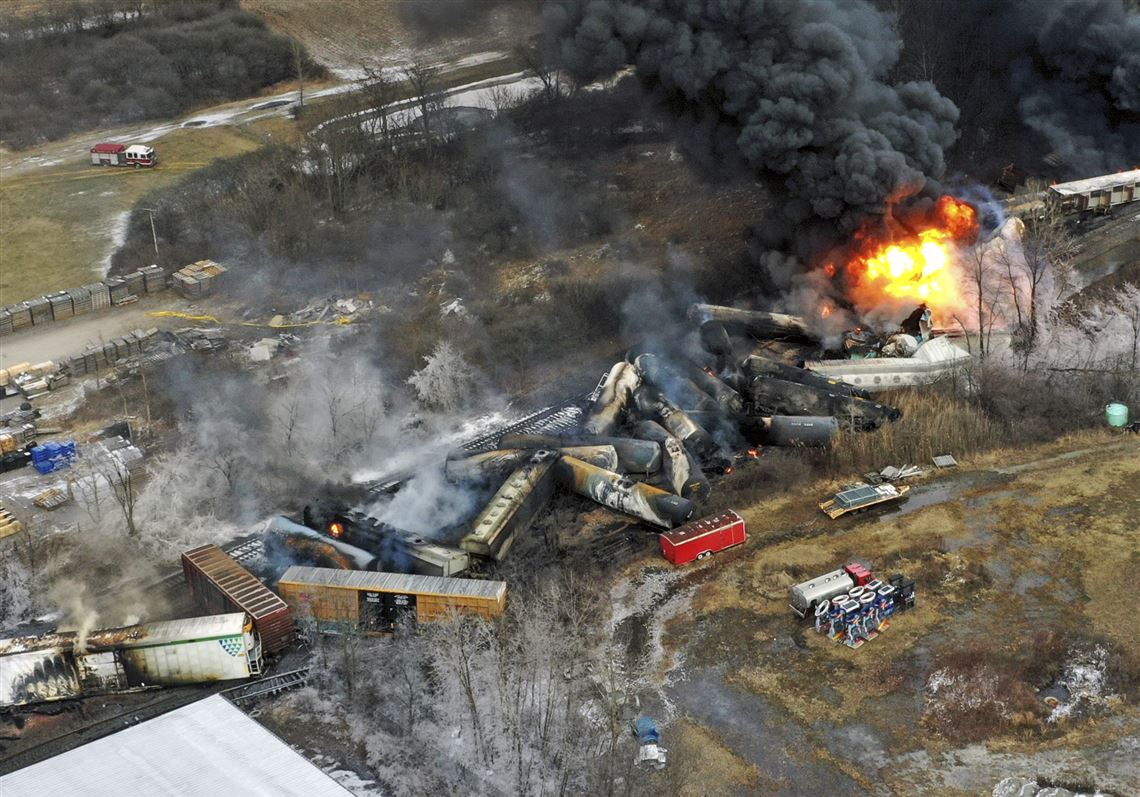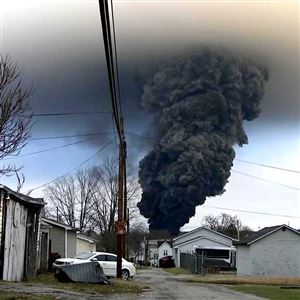Pittsburgh has been more than fortunate in avoiding rail disasters, such as Friday’s East Palestine derailment and subsequent release of noxious chemicals. Such a calamity could easily happen in a densely populated area. To ensure it doesn’t, state and federal regulators should bolster rail safety standards, especially the paltry fines levied against railroads that violate them.
Railroad safety
The railroad industry argues long-distance transport of goods, even dangerous materials, by train is extremely safe. The American Association of Railroads (AAR), an industry trade group, says that more than 99.9% of hazardous material shipments make it safely to their destinations. Further, due to technological advances like Positive Train Control, which can apply brakes before the human operator is aware of a malfunction, rail accidents continue to fall. Since 2000, all accidents have gone down 31%, and hazmat accidents 64%.
But for railroads, like commercial airlines, the cost of a single failure can be devastating. A single tanker truck can hold up to 10,000 gallons, but tanker train cars hold up to 30,000 gallons, and usually travel by the dozens. Derailments may be less common than tractor-trailer accidents, but they are far more dangerous and destructive.
The AAR reports that a total of 100 million tons of freight originated and terminated in Pennsylvania in 2021. Millions more tons passed through. Roughly one-tenth of the originating cargo was petroleum products, and a little more of the terminating traffic was chemicals. Just those two line items alone account for more than 110,000 carloads. Even if 99.99% of hazmat freight arrives safely, we’d still expect dozens of carloads-worth of hazmat mishaps in the commonwealth every year.
Close calls
The train that derailed in East Palestine was headed for the Conway Yard along the Ohio River in southern Beaver County. Any cars that continued on, potentially including the car whose damaged axle is believed to have caused the accident, would have passed through Pittsburgh either along the South Side Slopes, or through the North Side, Downtown and the East End. The faulty car was a time bomb that happened to detonate in a small Ohio town.
Five years ago, another Norfolk Southern train derailed above the Station Square T Station, dumping several cars onto the light rail tacks below. Luckily, those were intermodal containers full of consumer goods, the most potent of which was Listerine. Imagine, however, if it had been petroleum, vinyl chloride or some other even more dangerous chemical. And in 2006, several cars of yet another Norfolk Southern train, this time carrying petroleum, tumbled into the Beaver River at New Brighton and ignited. Again, we were lucky: The accident resulted in no injuries or lasting damage.
One recent innovation that has addressed urban hazmat dangers is the Rail Corridor Risk Management System, which uses 27 criteria to determine the safest routes for trains hauling dangerous cargo. This doesn’t do much, however, for Pittsburgh, a geographic chokepoint in the national rail system: Between Erie and southern West Virginia, every east-west route owned by a Class I railroad, except one, passes through or near the Golden Triangle.
Stricter oversight
Given its exposure to risk, Pennsylvania ought to take the lead in advancing state oversight of railroads. The federal government has exclusive rights to regulate railroads, but California has shown that a state can collaborate with Washington to improve oversight. A 2006 California law, and subsequent legal action, resulted in the state gaining the right to inspect railroads’ security protocols.
Pennsylvania has more freight rail mileage than California, and the fourth-most in the country. The commonwealth is also home to more railroad companies, 61, than any other state. The legislature should work with the Public Utility Commission to find ways to increase state-level oversight, especially of corporations’ safety and security protocols. It’s low hanging fruit: Right now, the PUC only employs 10 inspectors to cover five dozen companies and over 5,000 miles of rail. Budget for more.
Lastly, federal railroad regulators can’t significantly hurt companies’ bottom lines when they endanger the public. The maximum civil penalty the FRA can levy when a hazmat incident “results in death, serious illness, or severe injury ... or substantial destruction of property” is a little more than $200,000. When Norfolk Southern’s containers, due to a known track defect, tumbled onto PRT tracks in 2018, the agency had to fight bitterly to get $2.5 million in reimbursement for the damages. That’s not enough.
State and federal government can’t eliminate the risk of transporting dangerous cargo, or keep trains away from cities, but they can create strong incentives for companies to reduce accidents — and oversee them to make sure they do.
First Published: February 9, 2023, 5:00 a.m.



















